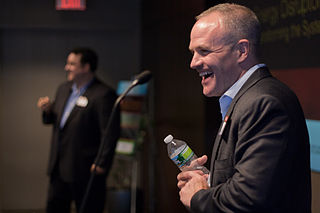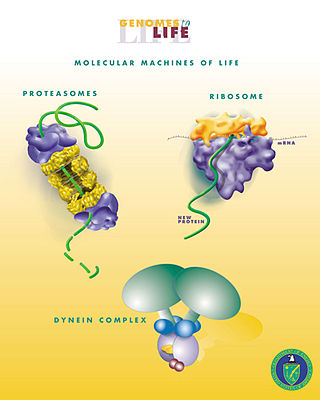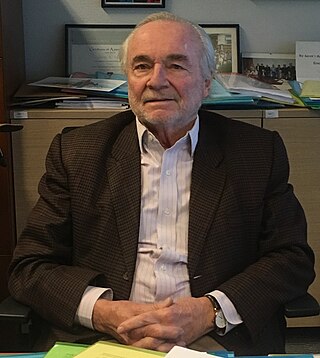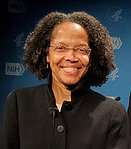
Metabolic engineering is the practice of optimizing genetic and regulatory processes within cells to increase the cell's production of a certain substance. These processes are chemical networks that use a series of biochemical reactions and enzymes that allow cells to convert raw materials into molecules necessary for the cell's survival. Metabolic engineering specifically seeks to mathematically model these networks, calculate a yield of useful products, and pin point parts of the network that constrain the production of these products. Genetic engineering techniques can then be used to modify the network in order to relieve these constraints. Once again this modified network can be modeled to calculate the new product yield.

Jay D. Keasling is a professor of chemical engineering and bioengineering at the University of California, Berkeley. He is also associate laboratory director for biosciences at the Lawrence Berkeley National Laboratory and chief executive officer of the Joint BioEnergy Institute. He is considered one of the foremost authorities in synthetic biology, especially in the field of metabolic engineering.

Biological engineering or bioengineering is the application of principles of biology and the tools of engineering to create usable, tangible, economically viable products. Biological engineering employs knowledge and expertise from a number of pure and applied sciences, such as mass and heat transfer, kinetics, biocatalysts, biomechanics, bioinformatics, separation and purification processes, bioreactor design, surface science, fluid mechanics, thermodynamics, and polymer science. It is used in the design of medical devices, diagnostic equipment, biocompatible materials, renewable energy, ecological engineering, agricultural engineering, process engineering and catalysis, and other areas that improve the living standards of societies.
Bioprocess engineering, also biochemical engineering, is a specialization of chemical engineering or biological engineering. It deals with the design and development of equipment and processes for the manufacturing of products such as agriculture, food, feed, pharmaceuticals, nutraceuticals, chemicals, and polymers and paper from biological materials & treatment of waste water. Bioprocess engineering is a conglomerate of mathematics, biology and industrial design, and consists of various spectrums like the design and study of bioreactors to the creation of kinetic models. It also deals with studying various biotechnological processes used in industries for large scale production of biological product for optimization of yield in the end product and the quality of end product. Bioprocess engineering may include the work of mechanical, electrical, and industrial engineers to apply principles of their disciplines to processes based on using living cells or sub component of such cells.
Daniel I-Chyau Wang was a Chinese-American chemical engineer. He was an Institute Professor at the Massachusetts Institute of Technology. He was known for founding the MIT Biotechnology Process Engineering Center and the expansion of the field of biochemical engineering.
Edward L. Cussler is an American chemical engineer and professor in the department of chemical engineering and materials science at the University of Minnesota. He is internationally known for his work in fluid mechanics, transport phenomena, and gas separations, especially in the areas of membranes and gas sorption. Cussler is an author of more than 250 academic papers, dozens of patents, and five books including the acclaimed text: “Diffusion”. He has served as director, vice president and president of the American Institute of Chemical Engineers, and he presented the AIChE Institute Lecture in 2014. Cussler and his wife Betsy, a former teacher at Edina High School, are long-time residents of Minneapolis, Minnesota.

James Edward Bailey, generally known as Jay Bailey, was an American pioneer of biochemical engineering, particularly metabolic engineering. He was said to be "the most influential biochemical engineer of modern times". In a special issue of a journal dedicated to his work, the editor said "Jay was one of biochemical engineering's most creative thinkers and spirited advocates, a true innovator who played an enormous role in establishing biochemical engineering as the dynamic discipline it is today". His numerous contributions in biotechnology and metabolic engineering have led to multiple awards including the First Merck Award in Metabolic Engineering.

Frances Hamilton Arnold is an American chemical engineer and Nobel Laureate. She is the Linus Pauling Professor of Chemical Engineering, Bioengineering and Biochemistry at the California Institute of Technology (Caltech). In 2018, she was awarded the Nobel Prize in Chemistry for pioneering the use of directed evolution to engineer enzymes.

Nicholas (Nikolaos) A. Peppas is a chemical and biomedical engineer whose leadership in biomaterials science and engineering, drug delivery, bionanotechnology, pharmaceutical sciences, chemical and polymer engineering has provided seminal foundations based on the physics and mathematical theories of nanoscale, macromolecular processes and drug/protein transport and has led to numerous biomedical products or devices.
Elmer L. Gaden Jr. has been described as "the father of biochemical engineering". A graduate of Columbia University, he wrote a dissertation that quantified the amount of oxygen necessary to fuel the fermentation process used to produce penicillin. Gaden established Columbia's program in biochemical engineering. He remained at Columbia for 26 years as a teacher, researcher, and department chair, before becoming dean of the college of engineering, mathematics, and business administration at the University of Vermont in 1974. In 1979, he joined the engineering faculty at the University of Virginia as the Wills Johnson Professor of Chemical Engineering. In 1994 he retired from Virginia, becoming Wills Johnson Professor Emeritus. He died in 2012.
Martin L. Yarmush is an American scientist, physician, and engineer known for his work in biotechnology and bioengineering. After spending 4 years as a Principal Research Associate in Chemical Engineering at MIT, in 1988 he joined Rutgers University, where he currently holds the Paul and Mary Monroe Endowed Chair in Science and Engineering and serves as Distinguished Professor of Biomedical Engineering. Yarmush is the founding director of the Center for Engineering in Medicine & Surgery (CEMS) at Massachusetts General Hospital. He is also a Lecturer in Surgery and Bioengineering at Harvard Medical School, and a member of the Senior Scientific Staff at the Shriners Hospital for Children, Boston.

Samir Mitragotri is an Indian American professor at Harvard University, an inventor, an entrepreneur, and a researcher in the fields of drug delivery and biomaterials. He is currently the Hiller Professor of Bioengineering and Hansjörg Wyss Professor of Biologically Inspired Engineering at Harvard John A. Paulson School of Engineering and Applied Sciences and the Wyss Institute for Biologically Inspired Engineering. Prior to 2017, he was the Duncan and Suzanne Mellichamp Chair Professor at University of California, Santa Barbara.

Doraiswami Ramkrishna is the Harry Creighton Peffer Distinguished Professor of Chemical Engineering at Purdue University since 1994.

Professor Juan A. Asenjo is a Chilean chemical engineer who specialises in biotechnology. He currently serves as the director of the Centre for Biochemical Engineering and Biotechnology at the University of Chile and is the President of the Chilean Academy of Science.

James C. Liao is the Parsons Foundation Professor and Chair of the Department of Chemical and Biomolecular Engineering at the University of California, Los Angeles and is the co-founder and lead scientific advisor of Easel Biotechnologies, LLC.
Maria Flytzani-Stephanopoulos was a Greek chemical engineer and, at the time of her death, had been the Robert and Marcy Haber Endowed Professor in Energy Sustainability and a distinguished professor at Tufts University. Flytzani-Stephanopoulos had also been the Raytheon Professor of Pollution Prevention at Tufts. She published more than 160 scientific articles with over 14,000 citations as of April 2018. She was a Fellow of AIChE, the American Association for the Advancement of Science and American Institute of Chemical Engineers. She lived in the Greater Boston Area with her husband, Professor Gregory Stephanopoulos of MIT.
Arnold Gerhard Fredrickson was an American chemical engineer and professor in the department of chemical engineering and materials science (CEMS) at the University of Minnesota. He was known for his work in transport phenomena, bioengineering and population dynamics. Fredrickson was the author of over 100 scientific publications and advisor to over 50 graduate students. He was recognized for his contributions to chemical engineering with election as fellow to the American Association for the Advancement of Science (1997) and fellow and founding member of the American Institute of Medical and Biological Engineers (1993).
Dionisios G. Vlachos is an American chemical engineer, the Allan & Myra Ferguson Endowed Chair Professor of Chemical Engineering at the University of Delaware and director of the Catalysis Center for Energy Innovation, a U.S. Department of Energy - Energy Frontiers Research Center. Throughout his career at University of Delaware and the University of Minnesota, he has advanced the study of catalysts and reaction engineering including catalytic applications in biomass utilization, alkane conversion and zeolites. He is a fellow of the American Association for the Advancement of Science and recipient of the Wilhelm Award of the American Institute of Chemical Engineers (2011).

Gilda A. Barabino is the president of the Olin College of Engineering, where she is also a professor of biomedical and chemical engineering. Previously, she served as the dean of The Grove School of Engineering at the City College of New York, and as a professor in the Departments of Biomedical Engineering and Chemical Engineering and the CUNY School of Medicine. On March 4, 2021, she became the President-Elect of the American Association for the Advancement of Science.
Maxwell Bruce Donald FRIC FIChemE FRHistS was a Ramsay professor of chemical engineering at University College London and a historian specialising in mining.










